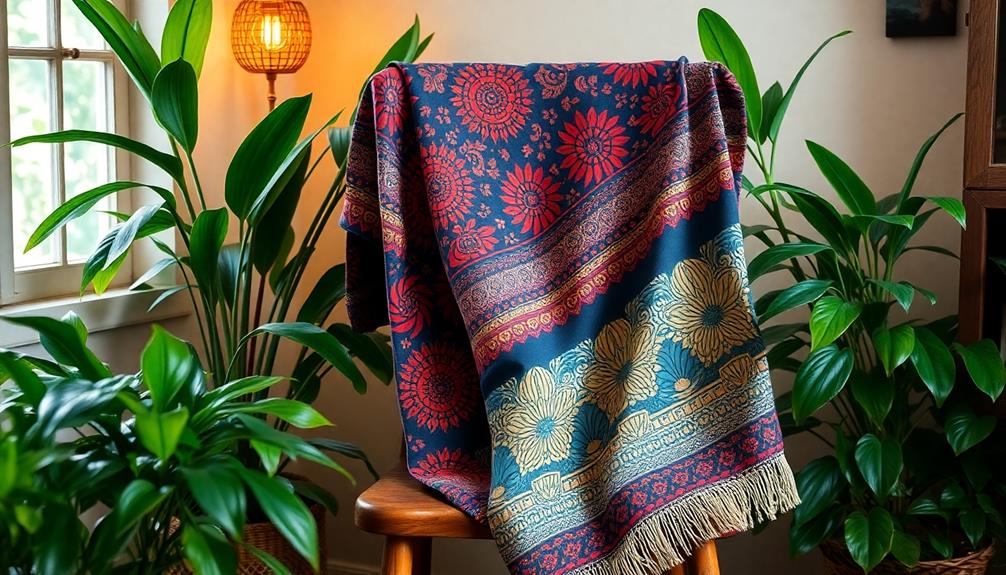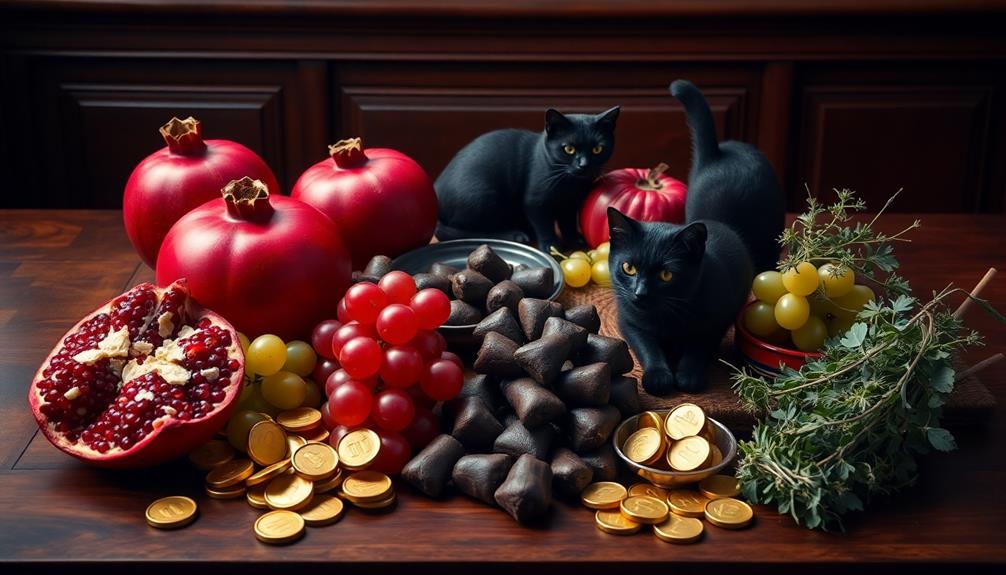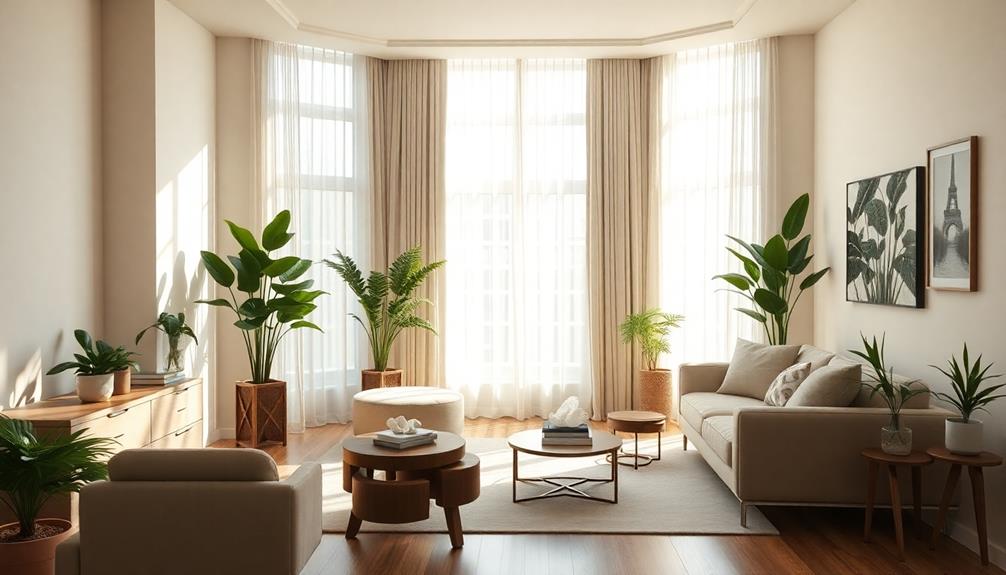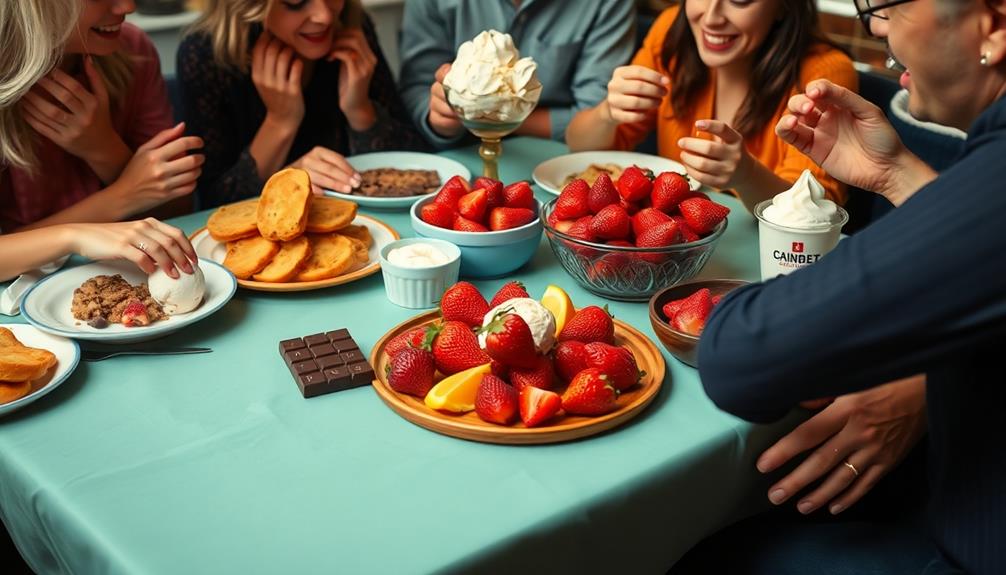Indonesian textiles, especially Batik and Ikat, can instantly elevate your home's style. Their vibrant colors and intricate designs add warmth and character to any space. You can incorporate these sustainable, handcrafted fabrics into cushions, curtains, or wall hangings for a bold aesthetic statement. By using eco-friendly materials, you're not only enhancing your decor but also supporting local artisans and preserving traditional techniques. The cultural significance behind these patterns enriches your living environment with storytelling elements. Curious about how to seamlessly integrate these textiles into your modern home? There's much more to explore in this vibrant trend.
Key Takeaways
- Incorporate vibrant Batik and Ikat textiles to add rich cultural narratives and warmth to your living spaces.
- Use eco-friendly materials like organic cotton and bamboo to enhance sustainability while decorating your home.
- Blend traditional motifs with modern design for a unique aesthetic that reflects both heritage and contemporary style.
- Add handcrafted artisan pieces, such as unique furniture and decorative accents, to celebrate Indonesian craftsmanship in your decor.
- Utilize digital printing techniques to create innovative and sustainable textiles that maintain traditional influences, enhancing your home's style.
Overview of Indonesian Textiles
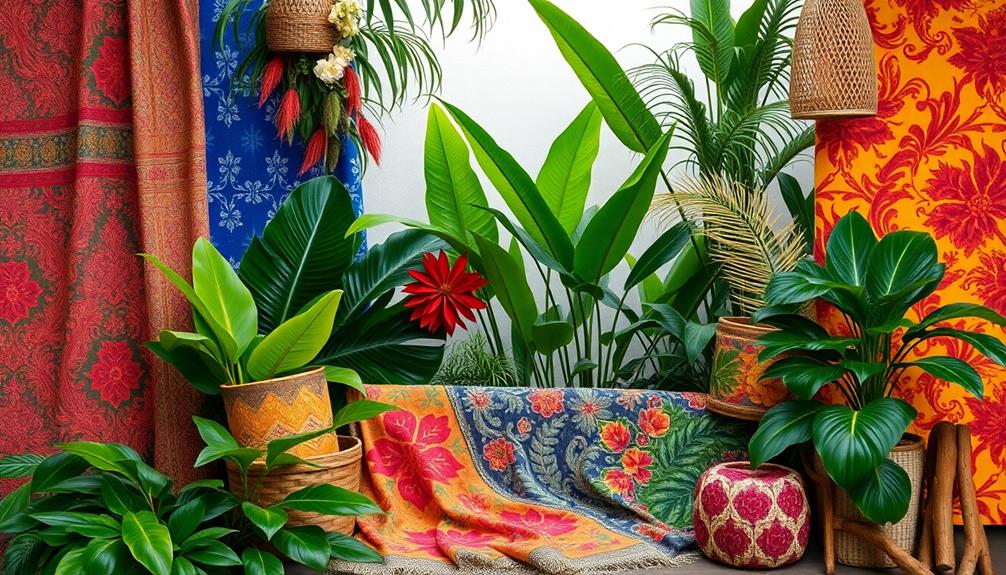
Indonesian textiles are a vibrant tapestry of culture and craftsmanship, showcasing unique techniques like Batik and Ikat. These traditional methods create stunning, vibrant patterns that not only beautify your space but also tell stories of Indonesia's rich cultural heritage.
As you explore these textiles for your interior design, you'll notice how local artisans skillfully blend traditional craftsmanship with modern aesthetics, ensuring that each piece is both timeless and contemporary. Additionally, incorporating traditional artistry such as Indonesian decor masks can further enhance your home's aesthetic appeal.
The Indonesian textile industry is thriving, valued at USD 13.83 billion in 2024 and projected to grow to USD 18.10 billion by 2029. This growth underscores the economic importance of these textiles, which are increasingly recognized for their quality and artistry.
A notable trend within this market is the shift towards sustainable practices and eco-friendly materials. Consumers like you're becoming more aware of the impact of your choices, favoring textiles that are produced responsibly.
Cultural Significance of Batik and Ikat
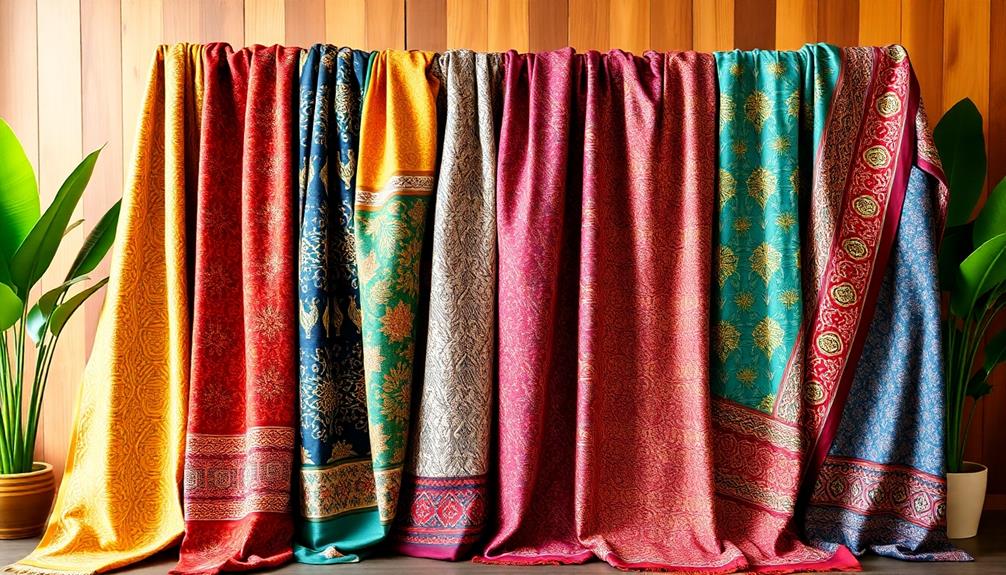
When you explore the cultural significance of Batik and Ikat, you'll find a rich history that dates back centuries, reflecting Indonesia's diverse heritage.
The intricate patterns in Batik tell stories of historical events and societal values, while the vibrant Ikat designs symbolize important themes like fertility and protection.
Additionally, these textiles often incorporate traditional motifs that enhance the aesthetic appeal of various decor styles, much like the unique artistic expressions found in Indonesian decor masks.
Understanding these elements not only enhances your appreciation of these textiles but also connects you to the broader narrative of Indonesian culture.
Historical Origins of Batik
Batik, with its intricate designs and vibrant colors, has woven itself into the fabric of Indonesia's cultural identity since the 6th century. This traditional textile showcases a unique wax-resist dyeing technique that allows artisans to create stunning patterns that tell stories of Indonesia's rich cultural heritage.
The use of traditional fabrics like Batik and Ikat enhances living spaces through vibrant colors and intricate patterns, providing comfort while reflecting cultural heritage. By applying hot wax to fabric before dyeing, the process results in a vibrant textile that captures the essence of local traditions.
The historical significance of Batik goes beyond aesthetics; it serves as a symbol of status and identity in Indonesian society. Often worn during ceremonies and important cultural events, Batik reflects regional diversity while celebrating the nation's artistry.
Indonesian Decorative Pillows further exemplify how these textiles can enhance various interior styles.
Alongside Batik, Ikat also holds a special place in Indonesia's textile production, involving the dyeing of threads before weaving. The blurred patterns of Ikat similarly represent cultural significance and regional uniqueness.
In recent years, there's been a resurgence in interest for both Batik and Ikat, leading to modern Indonesian adaptations that blend traditional techniques with contemporary design.
This evolution not only preserves their historical significance but also appeals to a global market, ensuring their relevance in today's world.
Symbolism in Ikat Patterns
The intricate patterns found in Ikat textiles are more than just visually enchanting; they carry deep cultural significance that resonates with the stories and traditions of the regions they originate from. Ikat is a traditional Indonesian textile technique, unique for its dyeing process where threads are tied and dyed before weaving. This technique allows vibrant motifs to emerge, symbolizing cultural identity and heritage.
Additionally, the importance of Indonesian decor masks highlights how these artistic expressions reflect local myths and folklore, enriching the cultural narrative.
Each Ikat pattern tells a story, often depicting significant motifs related to nature, history, and mythology. These designs serve as storytelling mediums, connecting generations and preserving local traditions.
Just like Batik, recognized by UNESCO as an Intangible Cultural Heritage, Ikat plays an essential role in expressing social status and community belonging. Specific patterns and colors are often tied to particular cultural or regional identities, adding layers of meaning to the textiles.
As interest in these traditional textiles surges, contemporary designers are adapting Ikat motifs for modern home textiles and fashion. By incorporating these vibrant patterns into your decor, you not only enhance your home's style but also celebrate the rich cultural tapestry of Indonesia.
Key Interior Design Elements

Incorporating key interior design elements from Indonesian style can transform your space into a vibrant and inviting haven. This style thrives on rich textiles, like batik and ikat, which add colorful patterns and cultural significance to your decor. By using natural materials such as wood and stone, you enhance durability while fostering a warm, organic aesthetic.
Here's a quick guide to essential elements:
| Element | Description |
|---|---|
| Vibrant Textiles | Handwoven fabrics that infuse color and warmth |
| Earth-Toned Colors | A balanced palette complemented by bold accents |
| Decorative Accents | Carved wood and pottery showcasing craftsmanship |
Unique furniture pieces often showcase intricate designs, merging comfort with cultural heritage. These elements not only enrich your interior's visual appeal but also create a harmonious balance in your living space. By blending these features, you'll celebrate traditional craftsmanship while making your home a stylish retreat. Embrace the beauty of Indonesian design and elevate your home with these enchanting elements!
Sustainable Practices in Decor
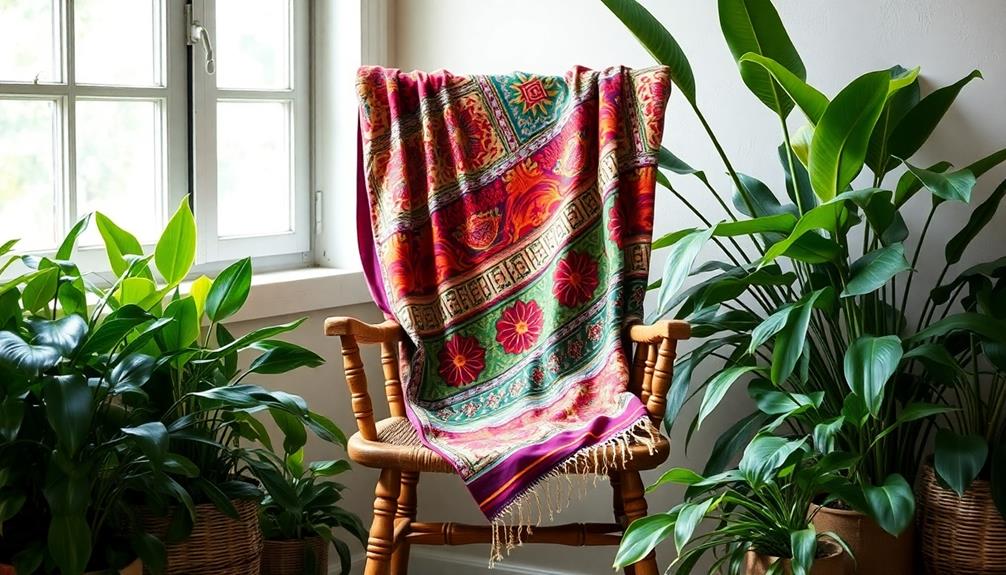
When you're choosing decor for your home, consider eco-friendly materials like organic cotton and bamboo that not only look great but also support sustainability.
Incorporating natural materials such as wood and stone, which are key in Balinese design concepts, adds warmth and character to your space.
Handcrafted artisan techniques add a unique touch while promoting local craftsmanship.
Eco-Friendly Material Choices
Eco-friendly material choices are reshaping the landscape of home decor, reflecting a growing commitment to sustainability. As you explore the Indonesian textile market, you'll find a wealth of options made from organic and biodegradable materials. This shift aligns with increasing consumer demand for sustainable products that minimize environmental impact while enhancing your living space's aesthetic appeal.
Here's a quick guide to some popular eco-friendly materials:
| Material | Benefits |
|---|---|
| Reclaimed Wood | Reduces waste, unique character |
| Bamboo | Fast-growing, renewable resource |
| Natural Fibers | Biodegradable, breathable |
| Eco-Friendly Dyes | Lower environmental impact |
Innovative design in the textile industry, including digital printing and eco-friendly dyeing processes, caters to your desire for quality and responsibility. Choosing locally sourced decor not only supports Fair Trade practices but also helps preserve traditional crafts and sustainable livelihoods. By opting for these eco-friendly materials, you contribute to a healthier planet while elevating your home's style. Embrace these sustainable choices and make a positive impact on both your environment and your living space.
Handcrafted Artisan Techniques
Discover the beauty of handcrafted artisan techniques in Indonesian textiles, where tradition meets sustainability. These time-honored practices, like Batik and Ikat, not only preserve cultural heritage but also embody sustainable practices. By using natural dyes and methods passed down through generations, you're embracing eco-friendly textile production that prioritizes the planet.
Additionally, incorporating elements from luxury tropical design aesthetics can further enhance the authenticity and style of your home.
When you choose handcrafted textiles, you support local artisans who rely on locally sourced materials such as bamboo and organic cotton. This choice reduces the carbon footprint associated with textile production and fosters community development.
Artisans employ age-old weaving techniques that minimize waste, ensuring that each piece is both beautiful and environmentally conscious.
Incorporating these unique textiles into your home decor elevates your space while aligning with your values. The rising demand for eco-friendly home textiles reflects a growing consumer preference for sustainable products.
Incorporating Textiles in Modern Homes
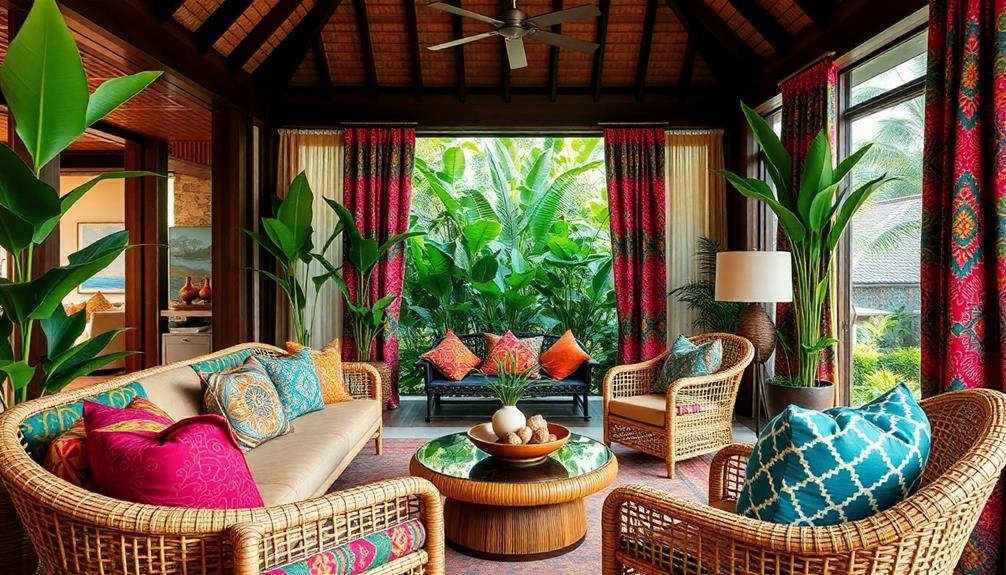
Incorporating vibrant Indonesian textiles into your modern home not only elevates your décor but also weaves a rich tapestry of culture and history into your space. You can choose from stunning batik and ikat patterns, adding both color and intricate designs that enhance your aesthetic appeal. By using handwoven fabrics, you'll introduce texture and warmth while supporting local artisans and preserving traditional craftsmanship.
Eco-friendly options like sustainably sourced bamboo and reclaimed materials align with today's sustainability trends, helping you create a responsible home decor. The rise of digital printing allows for innovative designs that maintain traditional influences, appealing to your desire for unique home accents.
Here's a quick guide on ways to incorporate these textiles into your space:
| Item | Style | Benefits |
|---|---|---|
| Cushions | Batik | Colorful, cozy comfort |
| Curtains | Ikat | Patterned privacy |
| Bed Linens | Digital Print | Unique & modern appeal |
| Table Runners | Handwoven | Textured warmth |
| Wall Hangings | Eco-friendly | Cultural statement |
Unique Furniture and Accessories
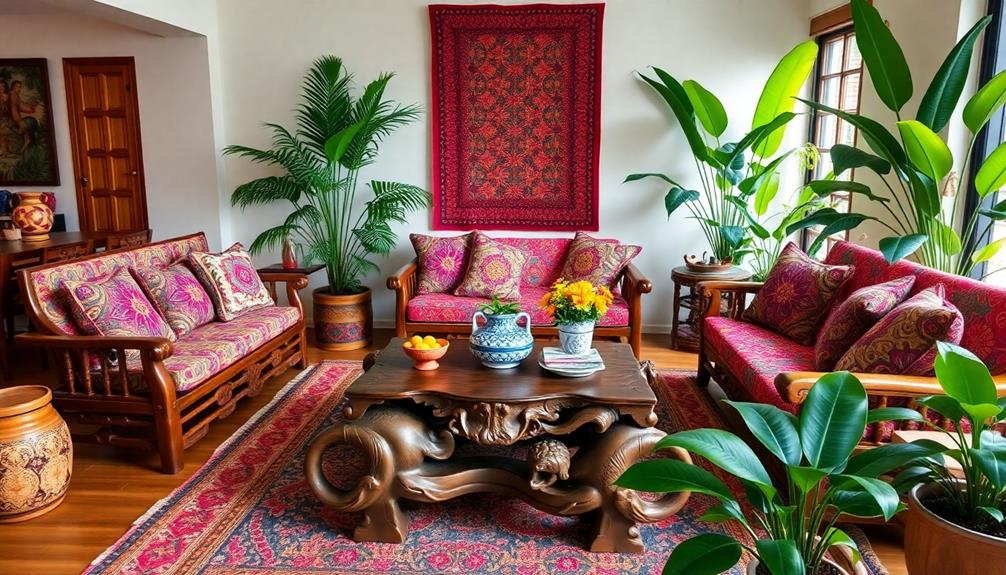
Transform your living space with unique furniture and accessories that celebrate Indonesian craftsmanship. The Indonesian home textile market offers stunning options like the Zulu Bed Head, showcasing intricate rattan weaving, and the Bahama Rocking Chair, which blends comfort with cultural significance.
These unique furniture designs not only enhance your home's aesthetic but also tell a story of traditional craftsmanship, similar to the luxurious designs found in tropical-themed luxury interior design.
Consider the Masekela Oversized Lounger, perfect for social gatherings. Its enchanting design merges traditional techniques with a modern flair, making it a focal point in any room.
Pair these pieces with vibrant cushions adorned in rich batik and ikat patterns, adding color and texture that invite warmth into your home.
Incorporating beautifully carved wooden accents crafted from eco-friendly materials like teak and mahogany further connects your interiors with Indonesia's rich cultural heritage.
These items not only elevate your décor but also support sustainable practices, promoting the preservation of artisanal crafts and local communities.
Frequently Asked Questions
What Is the Indonesian Textile Technique?
Indonesian textile techniques include Batik, Ikat, and Songket. Each method showcases unique artistry—Batik's wax-resist dyeing creates intricate patterns, Ikat features blurred designs from dyed yarns, and Songket is a luxurious hand-woven fabric.
What Is the Form of Textile Design From Indonesia?
Indonesian textile design showcases stunning forms like Batik and Ikat. You'll love how Batik's intricate wax-resist patterns and Ikat's unique dyed threads create vibrant, culturally rich pieces that enhance any space beautifully.
What Is the Outlook for the Textile Industry in Indonesia?
You might think the Indonesian textile industry is stagnant, but it's thriving. With projected growth rates of 5.84% and a focus on sustainable practices, it's set to become a global leader in textile innovation.
What Is the Trend of Textile Industry?
The textile industry is shifting towards sustainability and innovation. You'll notice a rise in eco-friendly materials and traditional techniques gaining popularity. As consumer demand grows, expect unique designs and improved quality to emerge in the market.
Conclusion
Incorporating Indonesian textiles like batik and ikat into your home isn't just a design choice; it's a way to connect with rich cultural traditions. Many believe that these vibrant fabrics can bring a sense of harmony and warmth, transforming any space. So, why not give it a try? By integrating these unique textiles into your decor, you might just discover a newfound style and a deeper appreciation for the stories they tell. Your home deserves it!
